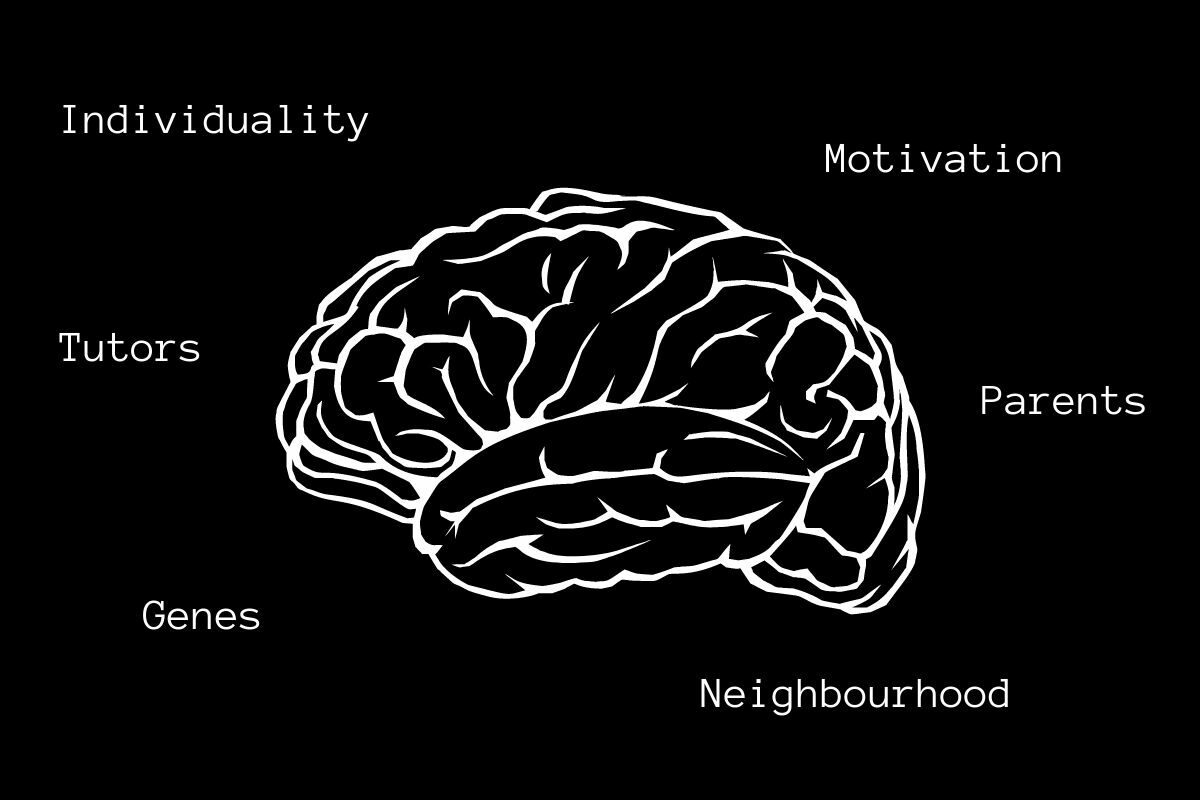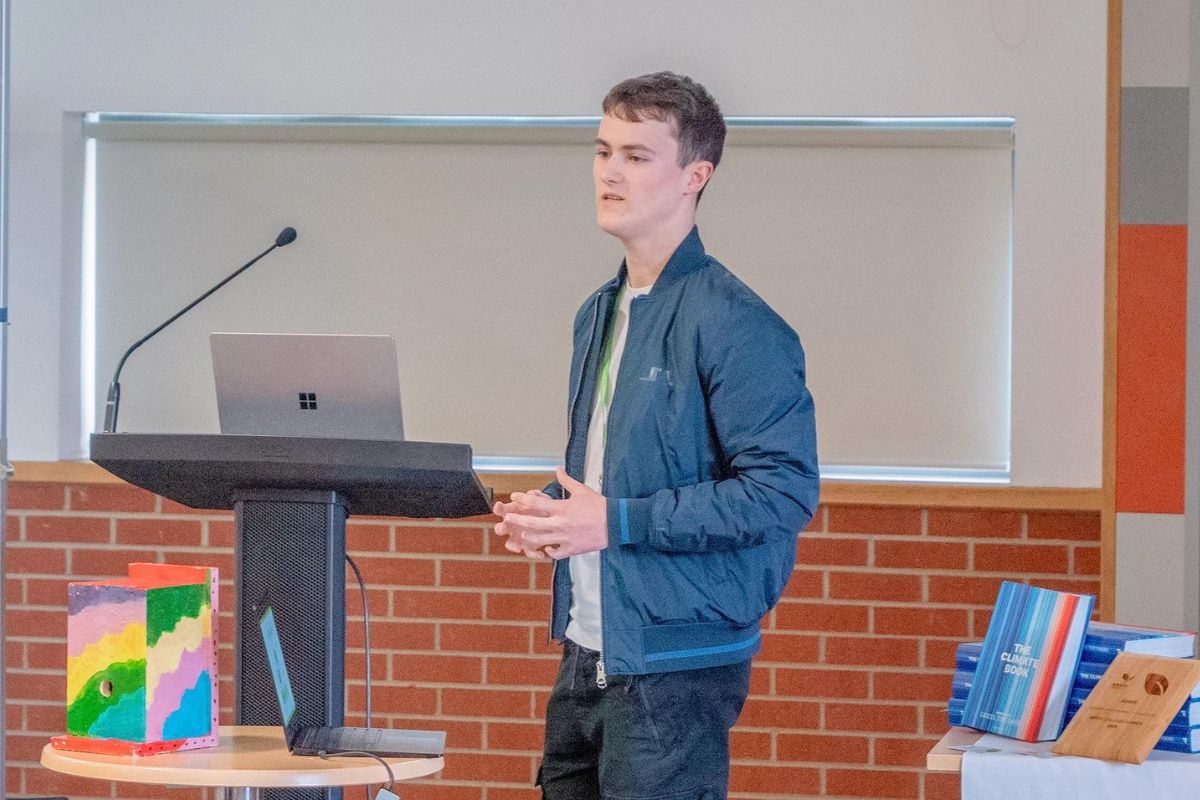Linguistic Models in Education

“The cradle rocks above an abyss, and common sense tells us that our existence is a brief crack of light between two eternities of darkness.” V Nabokov, as quoted by P Checkland in Systems Thinking, Systems Practice, 1981.
One essay Old Brain, New Brain in a collection by Professor Richard Dawkins (1) summarises a conjecture by computer expert Jeff Hawkins about how the human brain works. Admittedly Dawkins is describing a complex theme in just a few pages; a full study of the work might be more rewarding. What makes the text radical is his claim that the brain not only represents a model of the world but hold numerous models, in fact 150,000 models, each neatly stacked in columns which make up the brain’s cortex. Astonishingly, they thrive semi-autonomously to allow each of us to see some kind of ‘democratic consensus’. There seems to be a never-ending tussle inside our heads between an old reptilian brain (coached through time by natural selection) and a more recent mammalian cerebral cortex which despatches signals to the old brain which performs them. It is the latter that helps dieters suppress urge for sugar; exactly how many dieters succeed with suppression is undisclosed.
Brain Complexity
A detailed study of Hawkins work might well reveal how Homo sapiens draw on the contents of each stack to accomplish tasks, either completely or via part of a stack, and whether individual stacks possess a richness dependent on domestic settings, social encounters outside the home, and maybe more than a modicum of dice-rolling in family genetics. I would certainly like to upgrade my mediocre stacks. In fact, even tweaking these essential biological uprights for a ten percent improvement in performance would be welcome; maybe this will be achieved via scientists of brain modelling in the far distant future. What of 2023, or 2024? We could dodge the awesome problem of tweaking quirky Homo sapiens by not trying to mimic the unfathomable brain.
Science works: it isn’t mere opinion
Science and humanity subjects rely on models representing how the world ‘is’ or ‘was’; and among ‘hard’ sciences, the law of physics works for everyone. This vital strategy was complemented by a different approach during thirty years of Peter Checkland’s iconoclastic research programme. Based in the Department of Systems Engineering at Lancaster University, his small teams worked as consultants to assist clients whose opaque organisational problems were proving hard to define, let alone solve. Soft Systems Methodology (thankfully abbreviated to SSM) emerged from their work: a set of principles to coherently support enquiry between managers, technicians, and others keen to adjust their organisation’s subtle culture. Clients included the NHS, Civil Service, and ICL – plus hundreds of smaller institutions.
Checkland’s shortest book Learning In Action briefly describes SSM as a four-stage process which moves from finding out about scenario X (1) to executing improvement (4) by sketching systems models (2) that can be assessed by participants during the methodology’s debate stage (3). Although Systems Engineering was established by Professor Gwilym Jenkins to encourage the application of advanced statistics within industrial sectors, SSM models relied on proposals stated via English verbs. Each model is a linguistic tool showing purposeful behaviour via phrases which, when agreed as relevant, can be implemented. For instance, a model’s phrase Appreciate future research plans could be done through reading in-house files, telephone calls, or confidential interviews with senior managers. Exactly how the phrase (‘activity’ in SSM’s jargon) gets actioned is decided by those participating in real scenarios, not those reading Checkland’s articles.
Organisations create aims, values, and unease.
Crucially, scientists strive to model how part of the world actually is, whether NASA Artemis engine or the brain functions of modern cephalopods. In SSM however, models do not represent any complex human organisation but instead aim to foster constructive parley about the organisation. A college department may declare its prime mission as providing the next generation of nurses; yet retaining experienced staff and allocating tasks to individuals/teams also seem important, especially when the tasks allocated vary greatly in their popularity! Good research brings clarity to an investigation, but SSM’s principles do not assume organisations are orderly, fixed, or homogeneous. At best, Checkland’s principles for model building should sprinkle a little rationality across our frequently muddled world.
The methodology can be deployed among groups or on a personal level, the latter is rarely stressed in the literature. Suppose Mary has begun a one-year diploma in Business Policy – how might she make good use of numerous books, articles, and lectures on this multidimensional subject? A systems model to manage student files according to interpretation of role within a Business Policy Course gets sketched on flipchart paper. It shows two notional subsystems, one that moves data and another to clarify academic outlook. Activities in the notional Data Handling subsystem include Define data sources appropriate to chosen role, Obtain access to data sources, Extract and store examples from data sources. Despite the technical air here, these activities are only interdependent ideas, not particular hardware/software options. As an illustration of their logical dependency, examples (say, inflation in 1990s Venezuela) cannot be extracted from data sources (like The Financial Times) until the latter has been selected.
A different set of activities are displayed via the Interpret Student Role subsystem, not least: Consider possible roles to perform as a Business Policy student, Make a selection from possible roles, and Define choice criteria. In logic, the Data Handling subsystem is dependent on output from the Student Role arrangement.
Models that support social enquiry
Using this model of notional role, Mary can ponder over how she wants to pursue the course. Of multifarious possibilities in an ever-changing world, three are noted here.
- Considerable reliance on tutors’ recommended textbooks, putting together tidy but uncontroversial answers, hopefully allowing her much time to enjoy membership of the thriving college rugby club.
- More focus on authors/topics/interviews likely to assist her job prospects in a beautiful city she ranks highly.
- A critical style that contrasts several course themes against the ‘business reality’ expressed in journals and broadsheets. This approach may require additional effort in libraries creating categories, investigative journalism.
So far, the model belongs to Mary as a sense-making device within a complex college setting, not least, relations with tutors and administrators, establishing friendships among peer groups, and meeting deadlines. She may settle down to a pattern of work that mixes parts of the three ‘hows’ with new ideas as the term evolves. It is more usual in SSM research for models to be shared with a group keen to reconsider their modus operandi; a cautionary note for presentations is that whoever displays a model cannot be certain the sketch will avoid barbed questions from the audience. Influenced by, say, local traditions, recent professional training, and exchanges with colleagues, an experienced lecturer might draft a quite different data management model for discussion than the one given here. Checkland’s neutral methodology doesn’t mimic the pathway of scientific experiment; it merely facilitates learning in human situations which are poorly understood. I may eventually learn that tumbling into the abyss is actually the start of a bright, new existence.
By Neil Richardson












Responses